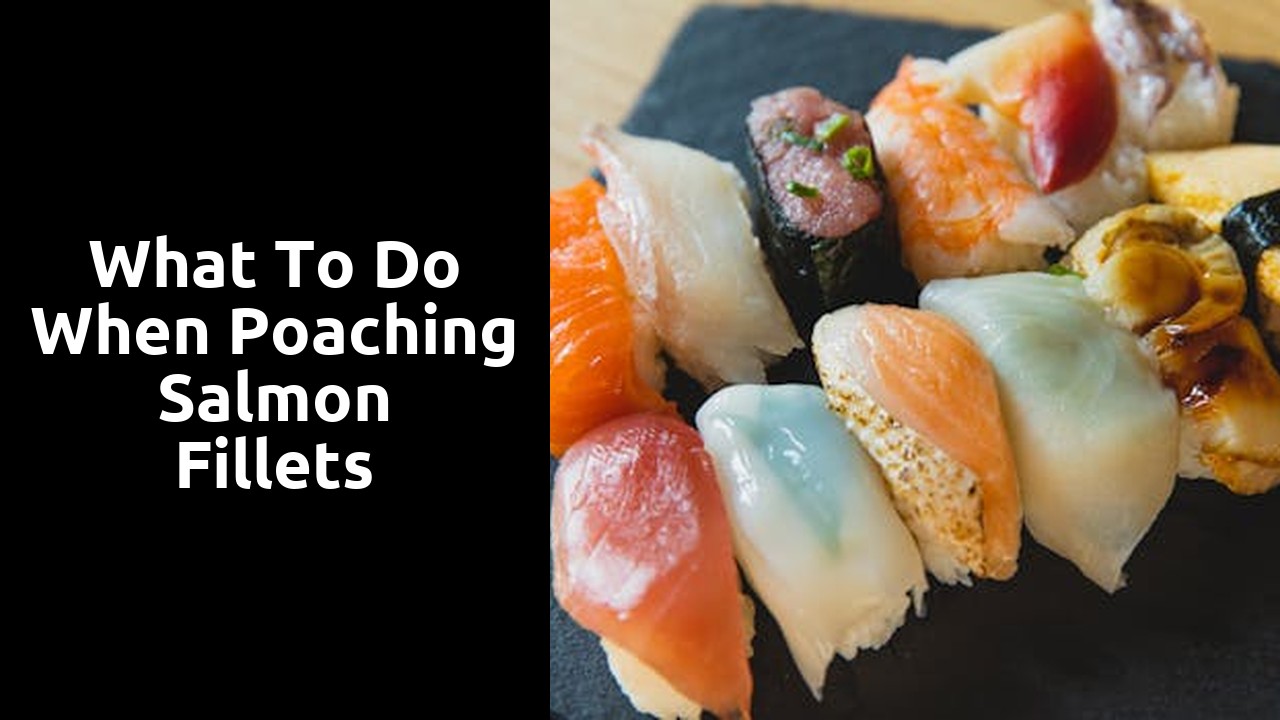What to Do When Poaching Salmon Fillets

Testing for Doneness
To ensure your salmon fillets are perfectly cooked when poaching, testing for doneness is crucial. The best way to determine if your salmon is cooked through is by checking the flesh for an opaque appearance and a flakey texture. Use a fork to gently press down on the fillet - if it easily breaks apart and the inside is no longer translucent, then your salmon is ready to be removed from the poaching liquid.
Overcooking salmon can result in a dry and less flavoursome dish, so be mindful not to leave it in the poaching liquid for too long. Remember that the residual heat will continue to cook the fish even after it's been removed from the liquid. By mastering the art of testing for doneness, you can enjoy perfectly poached salmon fillets bursting with flavour and moisture.
Look for Opaque Flesh and Flakey Texture
When checking for the doneness of poached salmon fillets, observe the change in the flesh colour from translucent to opaque. The once shiny and pink fish will turn to a light pink or peachy opaque hue, indicating that the salmon is cooked through. Be cautious not to overcook the fish as it can lead to a dry and tough texture, losing the delicate and moist nature that makes salmon so enjoyable.
In addition to the change in colour, the texture of the salmon should shift from soft and slightly raw to firm and flakey. Gently insert a fork or knife into the thickest part of the fillet and twist slightly – if the flesh flakes apart easily, the salmon is ready to be taken out of the poaching liquid. Achieving a perfect flakey texture is crucial for the enjoyment of poached salmon, ensuring a satisfying and delicious dining experience.
Removing Salmon from Poaching Liquid
To remove the salmon from the poaching liquid, carefully use a slotted spoon to lift the fillets out of the pan. Gently support the fillets with the spoon to keep them intact and prevent them from falling apart. Avoid pressing down on the salmon as it can cause the delicate flesh to break apart.
Once the salmon fillets are lifted out of the poaching liquid, place them on a plate lined with paper towels. Let them rest for a few minutes to drain off any excess liquid before serving. Handle the poached salmon with care to maintain its moist and tender texture, ready to be garnished and enjoyed.
Use a Slotted Spoon for Gentle Handling
When the salmon fillets are ready to be removed from the poaching liquid, care must be taken to keep the tender flesh intact. Using a slotted spoon is crucial for gentle handling, as it allows excess liquid to drain off without causing the delicate fillets to break apart. Gently lift the poached salmon from the liquid, supporting it underneath with the spoon to maintain its shape.
The slotted spoon's design enables the poached salmon to be transferred to a serving dish without excess liquid, ensuring a neat presentation. Avoid using tongs or a spatula, as they may squeeze the fish too tightly and compromise its texture. By delicately lifting the salmon with a slotted spoon, you can preserve its succulent flakiness and enjoy a beautifully cooked dish.
Serving Poached Salmon
To serve your perfectly poached salmon, gently transfer the fillets from the poaching liquid to a serving platter using a slotted spoon. Be careful not to break the delicate flesh while transferring. The delicate aroma of the tender salmon will surely entice your taste buds as you prepare your plate.
Enhance the presentation of your poached salmon by garnishing it with a sprinkle of fresh herbs and a touch of citrus zest. The vibrant colours of the herbs and the zesty smell of the citrus will not only add a pop of freshness but will also elevate the overall flavour profile of the dish. Your poached salmon is now ready to be enjoyed, a dish that is both visually appealing and bursting with delicate flavours.
Garnish with Fresh Herbs and Citrus Zest
To add a burst of fresh flavour to your poached salmon fillets, consider garnishing them with a generous sprinkling of fresh herbs and a zesty touch of citrus zest. The herbs will provide a fragrant aroma and a burst of green colour, enhancing the visual appeal of the dish. Opt for herbs such as dill, parsley, or chives for a complementary taste that will not overpower the delicate nature of the poached salmon.
When grating the citrus zest, be careful to only gather the colourful outer layer of the fruit, as the white pith can be bitter. Sprinkle the zest lightly over the salmon fillets just before serving to preserve its vibrant citrus flavour. This final touch will not only elevate the taste profile of the poached salmon but also add a pop of colour that will make the dish look visually appealing.
Related Links
Why Salmon Fillets are Best GrilledHow to Grill Salmon Fillets
The History of Grilling Salmon Fillets
A Roundup of the Best Poaching Techniques for Salmon Fillets
Top 10 Recipes for Baking Salmon Fillets
Review of Different Pan-frying Methods for Salmon Fillets
Why Broiling Salmon Fillets is a Healthy Cooking Method
What to Consider When Pan-frying Salmon Fillets